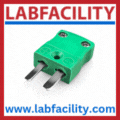
Posted to News on 27th Jul 2015, 00:00
Networking proves its worth in food and drink
Today's food and beverage plants must have a robust control and information system in order to meet the industry's need for high-production efficiency and total traceability. The control system also has to be hugely flexible in order to facilitate changes to plant and product that characterise the industry. Network technology has a key role to play, says John Browett of CLPA.

>Control engineering can be an intimidating discipline for anyone not trained in the subject. So, if asked to repair a malfunctioning control system or to restructure one in line with changes to the plant, most will need to bring in (expensive) experts. But it doesn't have to be that way. Today's open network technology has many attributes that address this complexity and bring it into a realm understandable by most engineers.
>Probably its most obvious advantage is that it reduces the amount and complexity of wiring within any system. Instead of needing an individual set of wires connecting each device in the network back to a main controller, it uses a 'bus' or daisy chain topology. The controller is also included in the line and the signals sent along it include an 'address', so that they go to the right device. Thus, the network changes wiring from something like a bathtub full of spaghetti to a data superhighway transmitting information in a simple, efficient and understandable way.
>A related advantage of an open network is that it can be changed, adapted, extended or reduced in moments. This is done essentially by adding new devices to the bus. For larger scale systems, multiple networks can be connected to a single controller, meaning these benefits are readily scalable to almost any size system. Hence the nightmare of traditional systems requiring hours of downtime while faults are traced though wiring harnesses, terminal blocks and control cabinets can be avoided.
>An example of such open networking technology is CC-Link, which offers over 1,300 compatible products from a over 280 manufacturers. This removes another restriction of traditional control solutions - being confined to the offering of a single manufacturer, or at least a small group of companies. CC-Link is also available in two main forms: fieldbus and Industrial Ethernet (CC-Link IE).
>CC-Link IE is also distinguished as being the only open Ethernet technology that offers gigabit bandwidth. Hence it is ideally suited to the demands of Industry 4.0.
>CC-Link has already proved its capabilities in many food industry projects, such as in a dairy in South Western England where a recent energy-saving project involved the site's water management system. Its supply is based on two boreholes, but this was not quite sufficient for the overnight washdown, so a costly mains supplement was also required. The water tanks, pumps and controls all needed upgrading and the dairy's engineers developed a plan based around CC-Link.
>The objective was to simplify the system, save energy and operating costs, reduce downtime and wastage and improve leak detection. Now, a new PLC automatically controls all aspects of the water system. It measures water demand at various points and works out appropriate pumping solutions. It then communicates these to variable-speed pump drives and pressure transmitters over CC-Link.
>The water pressure is optimised at 3 bar and pump speeds are calculated by the PLC with data sent via the CC-Link connection. Due to the fast control of the drives, the pump motors were downsized from 15kW to 7.5kW, providing considerable saving in energy.
>The installation was done by the site's own engineers who noted that using CC-Link made the whole project much easier and faster. The new system provides remote control and programming of the entire system, while power savings paid for the installation in about 18 months. Additional benefits include reduced water costs, less waste and increased ease of maintenance.
>In North Wales, another dairy has created the UK's first totally automated milk bottling plant. The operators believe that glass bottles are both more environmentally friendly and more cost-effective than plastic and asked a specialist machine builder to develop a simple modular plant that would facilitate growth and reconfiguration.
>At the hub of the plant's control system is a master PLC that coordinates all communications via CC-Link, while each module is controlled by its own micro-PLC. The intelligent slave PLCs allow sections to continue operating, even if there are problems in other modules, ensuring high throughput.
>Variable-speed drives are used to control the conveyor lines, allowing smooth starting - even under load - and enabling each module to be speed-optimised to suit production requirements while minimizing energy use.
>System flexibility is very important in this case, so the plant has been designed so that it can produce any type of bottled milk without reconfiguration. In fact, it can even change over to bottling orange juice in just 20 minutes. Other advantages include: production efficiency up from 60% efficiency to 87%; throughput increased by 30% due to the improved control; and more detailed and accurate production data collection.
>In a similar vein, a project to fill 72,000 glass bottles per hour with a Japanese health drink and pack them for transit has been realised using CC-Link. The process includes infeed, cleansing, filling, capping, labeling and packing. The plant incorporates 136 variable-speed drives, PLCs and many other devices such as sensors, switches and display screens. These are all integrated via CCLink. First, a vision system inspects the empty bottles for damage and contamination. Approved bottles filter through a marshalling conveyor to three separate rotating carousel systems where they are cleaned, rinsed, filled and capped. The drives seamlessly control all the conveyor lines and carousels using real-time data supplied over the CC-Link network.
>CC-Link's speed and distance capabilities (up to 10Mbit/s and 1.2km) made it ideal for the high-speed distributed communication needed on this plant. CC-Link also allowed for a dramatic reduction in the hardwiring, while using a single three-wire cable for connection minimized installation errors and gave the flexibility to extend the project without reconfiguration.
>In the Ukraine, CC-Link has brought high technology to the ancient art of wine making. Keen to ensure that increasing production is both efficient and quality focussed, viticulturists at a well-established vineyard installed a control system to maintain preset temperatures in both the production and maturing areas, as well as to measure the level of wine in the holding tanks. The new system also monitors the refrigerators' temperatures and coolant pumps, automating a previously demanding task.
>The project then extended to integrating several processes that were already individually automated into one unified system. CC-Link was chosen because of its ability to communicate easily with devices from a wide range of manufacturers.






